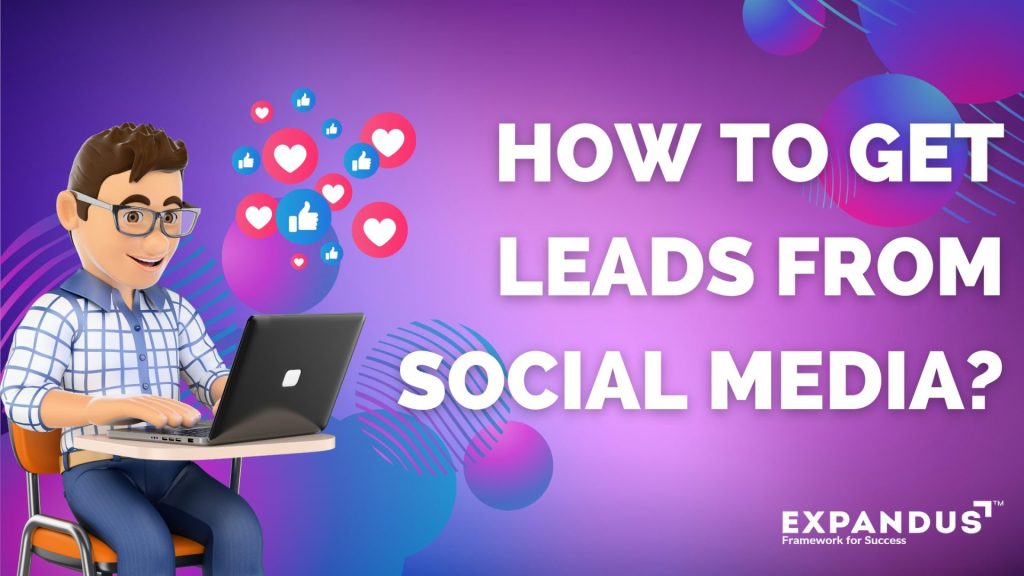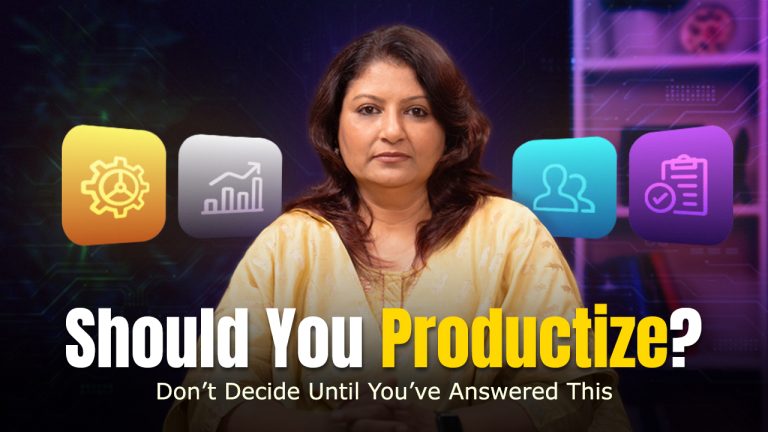How to Get Leads from Social Media?
Generating social media leads is crucial for promoting your company, products, or services. While it can be challenging, social media presents a great opportunity to connect with potential customers. With billions of people using social media, it’s a prime platform for acquiring leads. It’s all about using the right strategies at the right time to attract the right audience. In this article, we’ll explore effective ways to generate leads from social media and help your business grow.
Importance of social media in lead generation
Social media is super important for finding new customers! Imagine a big party with billions of people – that’s social media! It’s like a giant market where businesses can meet and chat with potential buyers.
Using social media smartly can help businesses attract lots of new customers. For example, when people see interesting posts or ads about a product they like, they might click on them to learn more. This is called social media leads generation – it’s like making friends who might become customers later.
Statistics show that businesses that if you generate leads from social media you get more customers. It’s like having a superpower – reaching out to people who might be interested in what you offer!
So, in a nutshell, social media is like a magic tool for businesses to find new customers and grow. It’s all about using it wisely and sharing interesting stuff that makes people curious about your products or services.
Overview of the importance of social media in lead generation
Social media is super important for businesses because it helps them find new customers easily. Here are some reasons why it’s so crucial:
- Big Party with Billions: Social media is like a huge party where billions of people hang out. That means lots of potential customers!
- Easy to Connect: It’s simple for businesses to connect with people on social media. They can share posts, pictures, and videos to catch people’s attention.
- Getting Noticed: When businesses share interesting stuff, people notice and want to learn more. It’s like making new friends who might become customers!
- Reaching the Right People: Social media lets businesses reach out to people who are interested in what they offer. It’s like finding a group of friends who love the same things you do.
- Building Trust: By sharing helpful and cool stuff, businesses can build trust with customers. People like to buy from brands they trust.
- Cost-Effective: Compared to traditional advertising, social media is often cheaper and can reach a wider audience.
In short, social media leads are a fantastic tool for businesses to find new customers, build relationships, and grow their business!
Statistics highlighting social media’s role in marketing and lead generation
Numbers show that social media is a super helpful tool for businesses to market their products and find new customers. Here are some cool stats that highlight how social media lead generation rocks in marketing:
- Billions of Users: There are over 3.5 billion people using social media worldwide. That’s like having access to a massive audience!
- Customer Interaction: Businesses that engage with their customers on social media have a 20-40% higher chance of getting more sales. It’s like having a friendly chat with potential buyers!
- Visual Content Rules: Posts with images or videos get way more attention – up to 650% more engagement! It’s like catching people’s eyes with cool pictures and videos.
- Boosting Website Traffic: Social media can drive a lot of traffic to a business website. In fact, 73% of marketers say social media marketing has been effective for their business.
- Influencer Impact: Collaborating with influencers can be super effective. Nearly 49% of consumers depend on influencer recommendations on social media.
So, these stats show that social media is a powerhouse for businesses to reach more people, engage with customers, and boost sales. social media lead generation is like having a secret weapon to grow your business!
Understanding Your Target Audience
Understanding your target audience is like knowing your best friends really well – it helps you connect with them better and have more fun together! In the world of business, your target audience is the group of people who are most likely to buy your products or use your services. It’s super important to understand them because it helps you create things they’ll love and want to buy.
Imagine if you’re selling video games. Your target audience might be young people who love gaming. By knowing this, you can create games with cool graphics, exciting challenges, and storylines that appeal to them.
Understanding your target audience means knowing their age, interests, needs, and what they like about your products. This helps you tailor your marketing strategies, messages, and products to meet their preferences. Book a demo today with us if you need help understanding your target audience.
Importance of knowing your audience
Here’s why knowing your target audience is important:-
- Connecting Better: Knowing your audience helps you understand them like a best friend. This makes it easier to connect and have fun together!
- Creating What They Love: When you know what your audience likes, you can create products or services they’ll love and want to buy.
- Tailored Marketing: Understanding your audience helps you create marketing messages that speak their language and resonate with them.
- Meeting Their Needs: By knowing their age, interests, and needs, you can offer products or services that meet their preferences and solve their problems.
- Building Trust: When you show that you understand your audience, it builds trust and loyalty. They’ll see you as someone who gets them and cares about their needs.
- Boosting Sales: Tailoring your offerings and marketing to your audience can lead to more sales and business success.
So, knowing your audience is like having a secret weapon for business success – it helps you connect, create, and succeed!
Tools and methods to identify and understand your target audience
Here’s a detailed look at tools and methods to identify and understand your target audience:-
- Surveys: Surveys are like asking questions to your audience. Use tools like SurveyMonkey or Google Forms to ask about things like age, interests, and what they like about your stuff.
- Feedback: Listen to what your current customers say. Check their reviews on places like Google or social media. It’s like reading notes from friends about what they like or don’t like.
- Social Media Numbers: Look at how many people like and share your posts on social media. It’s like seeing who cheers for you in a big crowd.
- Website Visitors: Use Google Analytics to see who visits your website and what they do there. It’s like checking who comes to your party and what they do while they’re there.
- Check Out Competitors: Look at what other businesses like yours are doing. It’s like peeking at what others are bringing to the party.
- Talk Directly: Have chats or interviews with a small group of your audience. It’s like having a cozy chat with friends to know what they really think.
- Create Personas: Make up pretend friends who represent your ideal customers. Think about what they like, how old they are, and what they need. It’s like creating characters for a story.
- Watch Analytics: Keep an eye on how people interact with your stuff online. It’s like watching a movie to see what parts people like the most.
By using these simple tools, you can get to know your audience better. This helps you make stuff they’ll love and want to buy, just like getting the right party snacks for your friends!
Ready to Earn More? Discover Proven Strategies to Raise Your Hourly Rate!
Choosing the Right Social Media Platforms
Choosing the right social media platforms is like picking the best playground to have fun with your friends. Each platform has its own vibe and audience, so it’s important to choose wisely based on where your audience hangs out the most. Remember, it’s not about being on every platform, but about being on the right platforms where your audience is most likely to engage with your content.
popular social media platforms (Facebook, Instagram, Twitter, LinkedIn) & their audience demographics
Let’s talk about some popular places online where people like to hang out. These are called social media platforms, and they have different groups of people who use them. Here are a few of them:
- Facebook: This is like a big online gathering for everyone. People of all ages use Facebook to connect with friends and family, share photos, and discover news and events.
- Instagram: This is where you can share cool pictures and videos. It’s popular among younger people who like to show off their creativity and follow their favorite celebrities and influencers.
- Twitter: Think of Twitter as a big conversation happening in short messages called tweets. It’s great for sharing thoughts, news, and updates. Many businesses and professionals use Twitter to connect and share ideas.
- LinkedIn: This is like a professional networking site. It’s where people go to connect with colleagues, find job opportunities, and share industry news and insights.
Each of these platforms has its own group of people who like to use them. For example, Facebook has a wide range of users, while Instagram is popular among younger audiences. Twitter is known for quick updates and discussions, while LinkedIn is focused on professional connections. It’s like different neighborhoods in a big city where you can find the one that suits you best!
How to select the most effective platforms for your business based on your audience and service?
Choosing the best social media platforms for your business is like picking the perfect playground for your friends. Here’s how you can do it easily:
- Know Your Audience: Think about who your customers are. Are they young, old, or professionals? Understanding their age, interests, and habits helps you choose the right platforms.
- Understand Platform Benefits: Learn about what each platform offers. Some are great for sharing pictures and videos (like Instagram and YouTube), while others are better for sharing news and articles (like Twitter and LinkedIn).
- Consider Your Content: Think about the type of content you’ll share. If it’s visual (like photos or videos), platforms like Instagram or Pinterest may work well. For industry news or blogs, Twitter or LinkedIn could be better.
- Check Competitors: See where your competitors are active. If they’re doing well on a platform, it might be a good choice for you too.
- Start Small: It’s okay to begin with one or two platforms and expand later. Focus on quality content and engagement rather than being everywhere at once.
- Monitor and Adjust: Keep an eye on how your chosen platforms perform. If one isn’t working as expected, try another. It’s like trying different playgrounds until you find the one where your friends have the most fun.
By following these steps, you can select social media platforms that fit your audience and services perfectly, helping your business grow and connect with the right people.
Creating Engaging Content
Creating engaging content is like telling a fun story that everyone wants to hear. It’s about making things interesting and exciting for your audience. Whether you’re writing, making videos, or sharing pictures, the goal is to grab people’s attention and keep them interested. Let’s explore how you can create content that people love to see and share!
Types of content that drive engagement and generating leads with social media marketing
Let’s talk about the different kinds of content that can get people interested and excited about what you do. These are the types of things that can help you connect with your audience and even get more people interested in what you offer. Here are a few examples:
- Informative Articles: These are like little stories that teach people something new. They can be about anything from how-to guides to interesting facts about your industry.
- Engaging Videos: Videos are like mini-movies that can show off your products or services in action. They can also be fun and entertaining, like behind-the-scenes looks at your business.
- Eye-Catching Images: Pictures can grab people’s attention and make them curious about what you have to offer. They can be photos of your products, happy customers, or even beautiful landscapes related to your business.
- Interactive Quizzes or Polls: These are like little games that people can play to learn more about themselves or your business. They can be fun and engaging ways to get people involved.
- Customer Testimonials: Sharing stories from happy customers is like showing off your best reviews. It can build trust and show potential customers why they should choose you.
- Behind-the-Scenes Content: Giving people a sneak peek into how your business works or the people behind it can be really interesting. It’s like inviting them to see the magic behind the scenes.
By using these types of content, you can keep your audience engaged and interested in what you have to offer. It’s all about creating content that people enjoy and find valuable!
The role of storytelling in creating compelling content
Storytelling is like sharing a fun or interesting story with your friends. It’s about using words, pictures, or videos to create something that people want to hear or see. In creating content for your business, storytelling plays an important role in making your message more compelling and engaging. Here’s why storytelling is important:
- Captures Attention: Just like a good story grabs your attention, storytelling in content makes people stop and pay attention to what you’re saying.
- Makes Content Memorable: Stories stick in our minds better than plain facts. When you tell a story, people are more likely to remember it.
- Creates Emotional Connection: Stories can evoke emotions like joy, curiosity, or empathy. When people feel connected to your content emotionally, they are more likely to engage with it.
- Helps Explain Complex Ideas: Stories can simplify complicated concepts or ideas, making them easier for people to understand and relate to.
- Builds Trust: Sharing stories about your business, customers, or journey can build trust with your audience. It shows authenticity and helps people connect with your brand on a deeper level.
In summary, storytelling is a powerful tool for creating content that is interesting, memorable, and meaningful to your audience. It’s like adding a touch of magic to your messages!
Tips for creating a content calendar
here are some easy tips for creating a content calendar:
- Know Your Goals: Decide what you want to achieve with your content. Are you trying to inform, entertain, or promote something? Knowing your goals helps you plan your content better.
- Understand Your Audience: Think about who will be reading or watching your content. What do they like? What problems do they have? Tailor your content to meet their needs and interests.
- Choose Topics: Brainstorm ideas for topics that align with your goals and audience interests. Make a list of ideas that you can use throughout the month.
- Set a Schedule: Decide how often you want to post new content. It could be daily, weekly, or monthly. Set specific dates and times for each piece of content.
- Create a Content Calendar: Use a calendar or spreadsheet to organize your content schedule. Include details like topic, format (article, video, infographic), keywords, and any images or links you need.
- Mix Up Content Types: Don’t stick to just one type of content. Mix it up with articles, videos, images, infographics, and more to keep things interesting.
- Plan Ahead: Schedule your content in advance. This gives you time to create, review, and edit each piece before it goes live.
- Review and Analyze: After each content piece is published, review how it performed. Look at metrics like views, likes, shares, and comments to see what resonated with your audience.
By following these simple tips, you can create a content calendar that keeps your audience engaged and helps you achieve your content goals effectively.
Utilizing Paid Social Media Advertising
Using paid social media advertising is like putting up a big sign that says, “Come check out our amazing stuff!” It’s a way to reach more people and get them interested in what you have to offer. Let’s explore how paid social media advertising can help your business grow!
Overview of paid advertising options on different platforms
When it comes to advertising your business online, there are various platforms where you can run paid ads to reach your target audience. Each platform offers different options for advertising, and it’s essential to understand these options to choose the right ones for your business. Here’s an overview of paid advertising options on different platforms:
- Facebook Ads: Facebook offers a wide range of ad formats, including image ads, video ads, carousel ads, and slideshow ads. You can target your ads based on demographics, interests, behaviors, and more. Facebook also owns Instagram, so you can run ads on both platforms simultaneously.
- Instagram Ads: On Instagram, you can create photo ads, video ads, carousel ads, and story ads. These ads appear in users’ feeds and stories, allowing you to reach a visually engaged audience.
- Twitter Ads: Twitter offers promoted tweets, promoted accounts, and promoted trends as advertising options. Promoted tweets appear in users’ timelines, promoted accounts are suggested to relevant users, and promoted trends are displayed in the trending topics section.
- LinkedIn Ads: LinkedIn is a professional networking platform, so its ads focus on B2B targeting. You can run sponsored content, sponsored InMail (direct messages), text ads, and dynamic ads on LinkedIn to reach professionals and businesses.
- Google Ads (formerly AdWords): Google Ads allows you to run ads on Google’s search network, display network, and YouTube. Search ads appear in search results, display ads are shown on websites within Google’s network, and YouTube ads are displayed before or during videos.
- YouTube Ads: YouTube offers various ad formats, including skippable in-stream ads, non-skippable in-stream ads, bumper ads, display ads, and overlay ads. You can target your ads based on user behavior, demographics, and interests.
- Pinterest Ads: Pinterest ads include promoted pins, promoted carousels, and promoted video pins. These ads are displayed in users’ feeds and search results, helping you reach people searching for inspiration and ideas.
Each platform has its strengths and audience demographics, so it’s essential to choose the right platforms and ad formats based on your business goals, target audience, and budget.
How to set up targeted ad campaigns
Setting up targeted ad campaigns involves a few simple steps to ensure your ads reach the right people. First, identify your target audience by considering factors like demographics, interests, behaviors, and location. Next, choose the appropriate ad platform based on where your audience spends their time online. Then, create compelling ad content that resonates with your audience and clearly communicates your message. Use targeting options provided by the platform, such as age, gender, interests, and keywords, to narrow down your audience further. Set a budget and schedule for your ads to control spending and ensure they run at optimal times. Finally, monitor your ad performance regularly and make adjustments as needed to improve results and reach your advertising goals.
Measuring the ROI of your social media leads generator ads
Measuring the ROI of your Social media leads generator ads means figuring out if your ads are making you money or not. To do this, you look at how much money you spent on the ads and compare it to how much money you made from those ads. If you made more money than you spent, that’s a good ROI. If you didn’t make enough money to cover the ad costs, then you might need to change something about your ads to make them more effective. It’s like checking if a lemonade stand is making enough money to pay for the lemons and sugar it used to make the lemonade. If it’s making a profit, that’s a good ROI!
Wrapping It Up
Getting leads from social media is all about understanding your audience, creating engaging content, and using targeted advertising. By following these steps, you can attract potential customers, build relationships, and ultimately convert leads into sales. Remember to track your efforts, analyze what’s working, and make adjustments as needed to optimize your lead generation strategy. With a focused approach and consistent effort, social media can be a powerful tool for growing your business and reaching your goals.
If you want to improve your business and see real results, consider ExpandUS Business Coaching Services.
Our coaching is personalized to help you grow and succeed. Get in touch with us today to start your journey to success.










